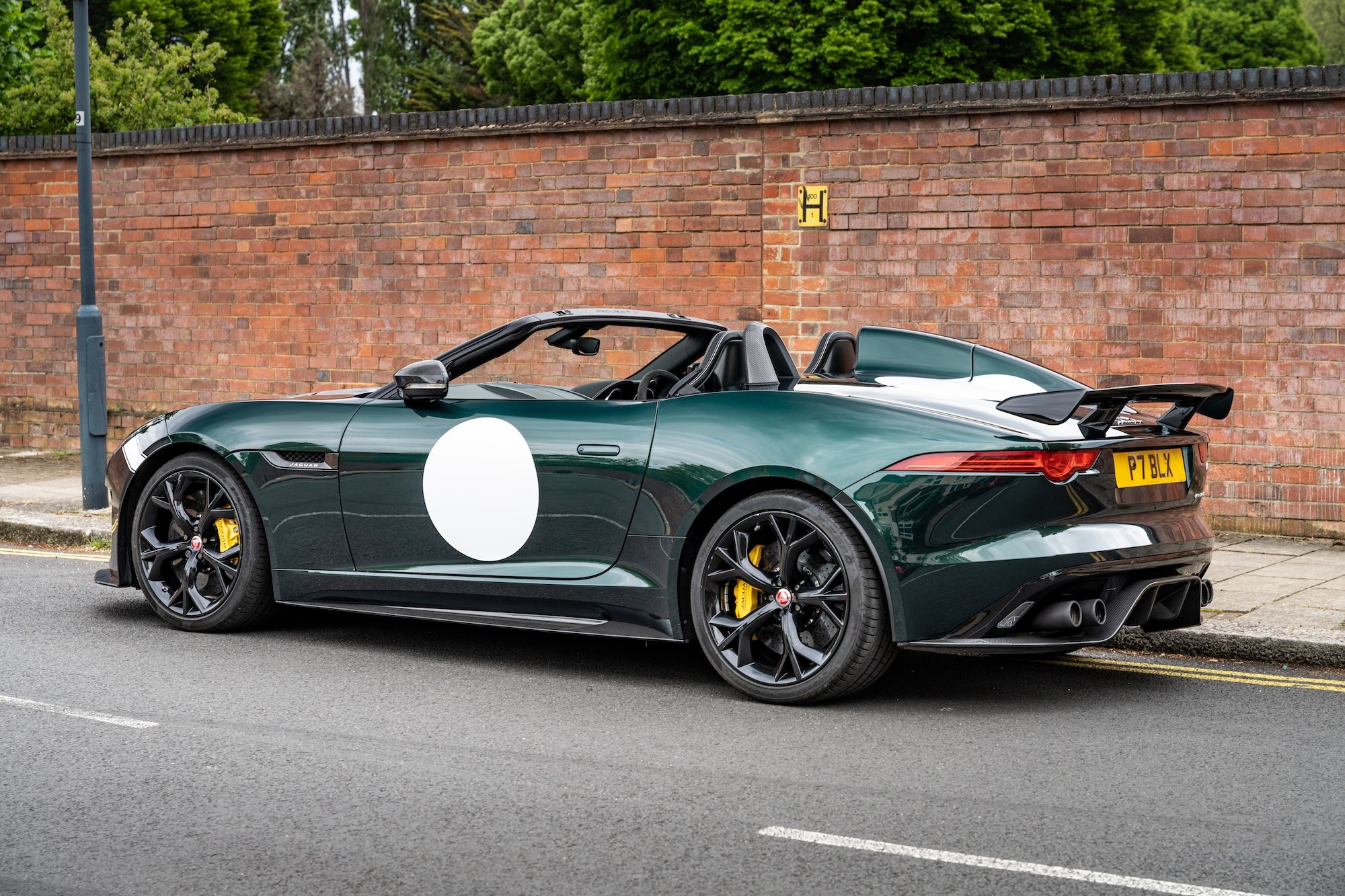The world of limited-edition sports cars often follows a predictable trajectory: initial excitement, immediate sell-out, and soaring values in the collector market. However, the Jaguar F-Type Project 7 presents a fascinating anomaly. Despite its celebrated heritage, limited production run, and initial acclaim, this special Jaguar is currently available for less than its original price. Let’s delve into the story of the Project 7 and explore why this unique vehicle might be a collector car bargain.
Jaguar’s legacy is deeply intertwined with motorsport, particularly the legendary 24 Hours of Le Mans. Decades before Porsche and Ford established their dominance, Jaguar etched its name into Le Mans history with five overall victories in the 1950s. This racing success forged a performance identity that became synonymous with the brand for generations. Further victories in 1988 and 1990 with the iconic Silk Cut liveried XJR-9 LM and XJR-12 LM race cars reinforced this performance heritage into the modern era.
Image of a red Jaguar F-Type Project 7 showcasing its rear three-quarter view, highlighting its unique design elements.
By 2013, while Jaguar remained a luxury brand, its performance image needed revitalization. Enter the F-Type, a sports car designed to recapture Jaguar’s sporting soul. To further emphasize this renewed focus and celebrate their seven Le Mans wins, Jaguar unveiled the F-Type Project 7 concept at the 2013 Goodwood Festival of Speed.
The Project 7 was a striking blend of the contemporary F-Type’s dynamism and classic design cues reminiscent of the iconic Jaguar D-Type. The reaction was immediate and overwhelmingly positive. Enthusiasts and collectors clamored for a production version, transforming what was initially intended as a marketing showcase into a limited production run of just 250 cars globally.
Image displaying the rear of a Jaguar F-Type Project 7, emphasizing its single-seater fairing and distinctive rear styling.
Upon its release, the Jaguar F-Type Project 7 garnered praise from automotive journalists. Reviewers lauded its enhanced F-Type character and the potent 575-horsepower V-8 engine, a notable increase of 25 horsepower over the standard F-Type V-8. However, they also noted its demanding nature at high speeds, contributing to its raw, driver-focused appeal. Beyond the power boost, the Project 7 featured performance-oriented upgrades including revised springs, dampers, and sway bars. Weight reduction was also a key factor, with the Project 7 shedding approximately 190 pounds compared to the standard V-8 convertible. This weight saving was achieved in part by a minimalist manual roof, designed more for quick showers than extended top-down touring. Visually, the Project 7 distinguished itself with a shorter windscreen, a prominent fairing behind the driver’s seat, and race-inspired number roundels on the doors, all nods to Jaguar’s racing heritage.
Considering its limited production, significant performance enhancements, and strong ties to Jaguar’s celebrated history, one might expect the Project 7 to command premium prices in the thriving collector car market. Yet, recent sales data suggests a different reality. A well-maintained 2015 Jaguar F-Type Project 7 with just over 3,000 miles recently sold on Collecting Cars for £105,000 (approximately $131,000) before auction fees. Given its original MSRP of $165,995, this sale represents a considerable depreciation from its initial value.
Interior view of a Jaguar F-Type Project 7, showcasing its driver-focused cockpit and limited edition badging.
This isn’t an isolated incident. Over the past two years, a majority of Project 7s sold on platforms like Bring a Trailer have fetched prices below their original sticker price. European auction results paint a similar picture, indicating a consistent trend of values below initial MSRP.
This market behavior contrasts sharply with other heritage-inspired, limited-edition sports cars. Take the 2011 Porsche 911 Speedster, for example. Limited to 356 units and originally priced at $204,950, these Speedsters now command significantly higher values, often selling well above $379,000 in excellent condition.
So, what accounts for the Jaguar Project 7’s unexpected market trajectory? Is its homage to Jaguar’s mid-20th century racing past perhaps too distant for today’s collectors? While this is a possibility, broader market dynamics and historical precedents offer further insights.
The collector car market may still be in the process of defining the Project 7’s place within the Jaguar lineage and the wider landscape of limited-edition models. This valuation uncertainty isn’t unique to Jaguar. The Ferrari 550 Barchetta Pininfarina, another open-top special, has also experienced fluctuating values as the market determines its position within the Ferrari hierarchy.
Time and perspective may also play a crucial role. The BMW 507, initially a commercial failure, eventually ascended to blue-chip collector status, demonstrating that market recognition for rare cars can sometimes be a gradual process. While the Jaguar Project 7 may not reach the stratospheric heights of the 507, its future prospects could be brighter than current valuations suggest.
Jaguar’s decision to discontinue the F-Type after 2024 signals the end of an era for the marque’s traditional sports car offerings. As Jaguar transitions towards an increasingly electrified and SUV-centric lineup, enthusiasts may well look back at the F-Type and its most performance-focused iteration, the Project 7, as the poignant swan song of Jaguar’s performance heritage.
Front view of a Jaguar F-Type Project 7, emphasizing its aggressive styling and limited edition details.
In the current market, the Jaguar Project 7 stands out as a comparatively affordable entry point into the realm of modern, limited-run sports cars. For discerning collectors seeking a unique blend of Jaguar heritage, thrilling performance, and exclusivity, the Project 7 represents a compelling opportunity and potentially a smart investment for the future.
